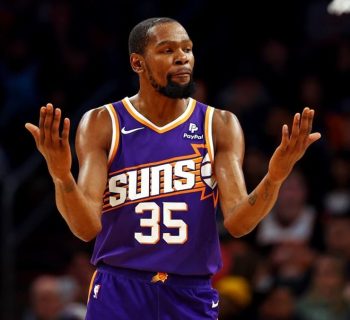NBA
NBA Daily: Team USA Facing More Adversity Than Just On-Court Competition

The 2019 FIBA Basketball World Cup is upon us. The World Cup takes place every four years with — usually — two years between it and the Olympics. But FIBA made some changes to the tournament last year, moves that included delaying the World Cup one year and announcing that it would become a broader qualifying event for the Olympics. In years’ past, only the winner of the tournament automatically qualified. The United States is looking to defend the gold after having won the past two tournaments in 2010 and 2014.
Basketball Insiders’ Douglas Farmer recently covered the potential free agency implications of players participating in Team USA. And while a select few NBA clubs will probably benefit from the synergy and friendships generated while playing with the roster, the team itself might struggle to maintain the gold standard – no pun intended – set by previous iterations.
Team USA has lost a good deal of the talent that it might have assumed to have on its roster as of a few months ago: Marvin Bagley Jr., Bradley Beal, Anthony Davis, Andre Drummond, De’Aaron Fox, Eric Gordon, James Harden, Montrezl Harrell, Tobias Harris, Damian Lillard, Kevin Love, Kyle Lowry, CJ McCollum, Paul Milsap, JJ Redick, Julius Randle , P.J. Tucker and Trae Young. Of course, this doesn’t take into consideration those who pulled their names from consideration prior to this summer.
The above-mentioned players opted out of Team USA for a variety of reasons, from load management to injuries and so on. But the overarching takeaway is that personal success and professional priorities take precedence over international basketball.
And that’s understandable. Many of the players who opted out have either experienced previous achievements with Team USA or are young enough to look ahead to future opportunities to do so.
But where does that leave Team USA this summer? Who is left to build around? Well, there’s Jayson Tatum, Jaylen Brown, Kemba Walker, Khris Middleton and Donovan Mitchell. Those five are probably the most talented players left on the USA’s roster. On paper, that group represents a dynamic and talented core that can compete with virtually anyone.
But that doesn’t guarantee success. First of all, there is a significant drop off in talent from previous years. During the most recent Olympics, Team USA had nine reigning All-Stars, but this current collection only has two – the lowest total since 1998, a lockout year for the NBA in which the professionals mostly opted out.
And the competition in the 2019 FIBA World Cup isn’t just anyone.
Sure, there is still talent on Team USA – albeit less than there was on past teams – but the real challenge for this team is the ever-increasing talent and competition overseas.
The competition being produced by Europe, Africa, Australia and Canada is far better than it’s ever been before. For reference, there were only 70 foreign-born players in the NBA at the start of the 2008-09 season, according to Basketball-Reference, the season that immediately followed the Redeem Team’s first-place finish in the 2008 Summer Olympics. That number jumped to 108 during 2018-19, representing an increase of more than 50 percent in only 10 years. In fact, 108 isn’t even the record for most foreign-born players on NBA rosters on opening night as that accomplishment belongs to the 113 in 2016-17.
Not only is there more foreign-born talent, that new competition is only getting stronger. There were only 17 foreign-born All-Stars in the 64 seasons prior to 2010; there have been 13 in the nine years since 2010 and three in 2018-19 alone.
But truly elite talent and volume are different. The NBA has crowned three different foreign-born MVPs over the past 14 seasons — Giannis Antetokounmpo, Dirk Nowitzki and Steve Nash — and only one during its first 48 years of existence (Hakeem Olajuwon).
And while there is more high-level international talent in the NBA than the league has ever seen, it’s undeniable that some countries produce significantly more of it. For example, there are far more NBA players from France, Canada and Australia than from China or Mexico – meaning that international talent is centralized in a select few countries.
Notably, as of 2018-19, there were 42 Canadian-born NBA players, 30 Serbians, 30 French, 25 Australians, 22 Croatians, 18 Germans, 17 Brazilians, 17 Nigerians and 12 Argentinians, among others.
So, obviously, Team USA has its fair share of competition. America still currently produces more top-tier talent than any other country — but without its best players available, the US could be in big trouble.
But this is a natural progression for a game that has become increasingly more global. According to the NBA, 127 current and former players and coaches visited 40 different countries this offseason to continue growing the game. And what’s more, 2018-19 NBA broadcasts reached one billion unique viewers. 35 percent of NBA.com visitors hail from outside of North America and NBA League Pass is available in 200 countries around the globe.
To call the NBA’s international footprint vast would somehow still undersell the sport’s rapid growth around the planet.
So it is logical to assume — while the United States will continue to produce elite players — that the rest of the world is on a more aggressive trajectory in creating their own other-worldly competitors. And it probably won’t be long before Team USA’s advantage on the hardwood becomes a thing of the past and other nations enter international tournaments as the favorite – regardless of whether the best in this country are participating or not.













